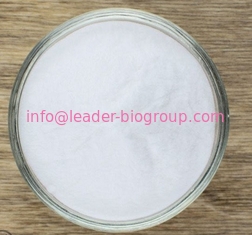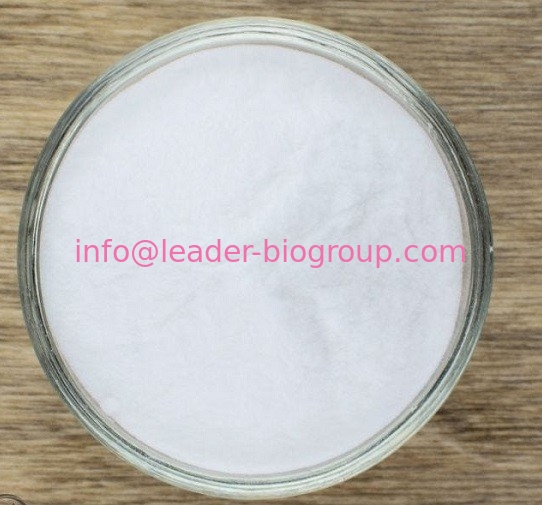| Cyclohexaose Basic information |
| Product Name: |
Cyclohexaose |
| Synonyms: |
SCHARDINGER ALPHA-DEXTRIN;ALPHA-CYCLODEXTRIN;CYCLOHEXAAMYLOSE;CYCLOMALTOHEXAOSE;CYCLOMALTOHEXOSE;2,4,7,9,12,14,17,19,22,24,27,29-Dodecaoxaheptacyclo(26.2.2.23,6.28,11.213,16.218,21.223,26)dotetracontane-31,32,33,34,35,36,37,38,39,40,41,42-dodecol, 5,10,15,20,25,30-hexakis(hydroxymethyl)-;Alfadex;alpha-Cycloamylose |
| CAS: |
10016-20-3 |
| MF: |
C36 H60 O30 |
| MW: |
972.84 |
| EINECS: |
233-007-4 |
| Product Categories: |
Industrial/Fine Chemicals;Biochemistry;Cyclodextrins;Functional Materials;Macrocycles for Host-Guest Chemistry;Oligosaccharides;Sugars;Dextrins,Sugar & Carbohydrates |
| Mol File: |
10016-20-3.mol |
 |
| |
| Cyclohexaose Chemical Properties |
| Melting point |
>278 °C (dec.) (lit.) |
| alpha |
[α]D25 +146~+151° (c=1, H2O) (After Drying) |
| Boiling point |
784.04°C (rough estimate) |
| density |
1.2580 (rough estimate) |
| refractive index |
1.7500 (estimate) |
| storage temp. |
Store at RT. |
| solubility |
H2O: 50 mg/mL |
| pka |
11.77±0.70(Predicted) |
| form |
powder |
| color |
White |
| PH |
5.0-8.0 (1% in solution) |
| optical activity |
[α]20/D +136±3°, c = 10% in H2O |
| Water Solubility |
Soluble in water at 1%(w/v) |
| Merck |
14,2718 |
| BRN |
4227442 |
| Stability: |
Stable. Combustible. Incompatible with strong oxidizing agents. |
| InChIKey |
HFHDHCJBZVLPGP-RWMJIURBSA-N |
| CAS DataBase Reference |
10016-20-3 |
| NIST Chemistry Reference |
«alpha»-Cyclodextrin(10016-20-3) |
| EPA Substance Registry System |
.alpha.-Cyclodextrin (10016-20-3) |
| Hazard Codes |
Xi |
| Risk Statements |
36-36/37/38 |
| Safety Statements |
26-36 |
| WGK Germany |
3 |
| RTECS |
GU2292000 |
| TSCA |
Yes |
| HS Code |
29400090 |
| |
| Cyclohexaose Usage And Synthesis |
| Chemical Properties |
White crystalline powder |
| Chemical Properties |
Cyclodextrins occur as white, practically odorless, fine crystalline powders, having a slightly sweet taste. Some cyclodextrin derivatives occur as amorphous powders. |
| Uses |
also available in pharma grade |
| Uses |
A naturally occuring clathrate. |
| Production Methods |
Cyclodextrins are manufactured by the enzymatic degradation of starch using specialized bacteria. For example, β-cyclodextrin is produced by the action of the enzyme cyclodextrin glucosyltransferase upon starch or a starch hydrolysate. An organic solvent is used to direct the reaction that produces β-cyclodextrin, and to prevent the growth of microorganisms during the enzymatic reaction. The insoluble complex of β-cyclodextrin and organic solvent is separated from the noncyclic starch, and the organic solvent is removed in vacuo so that less than 1 ppm of solvent remains in the β-cyclodextrin. The β-cyclodextrin is then carbon treated and crystallized from water, dried, and collected. |
| General Description |
Hexagonal plates or blade-shaped needles. |
| Reactivity Profile |
Cyclohexaose has hydrophobic cavities. Cyclohexaose forms inclusion compounds with organic substances, salts, and halogens in the solid state or in aqueous solutions. Cyclohexaose is incompatible with strong oxidizing agents. |
| Fire Hazard |
Flash point data for Cyclohexaose are not available; however, Cyclohexaose is probably combustible. |
| Pharmaceutical Applications |
Cyclodextrins are ‘bucketlike’ or ‘conelike’ toroid molecules, with a rigid structure and a central cavity, the size of which varies according to the cyclodextrin type. The internal surface of the cavity is hydrophobic and the outside of the torus is hydrophilic; this is due to the arrangement of hydroxyl groups within the molecule. This arrangement permits the cyclodextrin to accommodate a guest molecule within the cavity, forming an inclusion complex.
Cyclodextrins may be used to form inclusion complexes with a variety of drug molecules, resulting primarily in improvements to dissolution and bioavailability owing to enhanced solubility and improved chemical and physical stability.
Cyclodextrin inclusion complexes have also been used to mask the unpleasant taste of active materials and to convert a liquid substance into a solid material.
a-Cyclodextrin is used mainly in parenteral formulations. However, as it has the smallest cavity of the cyclodextrins it can form inclusion complexes with only relatively few, small-sized molecules. In contrast, g-cyclodextrin has the largest cavity and can be used to form inclusion complexes with large molecules; it has low toxicity and enhanced water solubility.
In parenteral formulations, cyclodextrins have been used to produce stable and soluble preparations of drugs that would otherwise have been formulated using a nonaqueous solvent.
In eye drop formulations, cyclodextrins form water-soluble complexes with lipophilic drugs such as cortico. They have been shown to increase the water solubility of the drug; to enhance drug absorption into the eye; to improve aqueous stability; and to reduce local irritation.
Cyclodextrins have also been used in the formulation of solutions,suppositories, and cosmetics. |
| Safety |
Cyclodextrins are starch derivatives and are mainly used in oral and parenteral pharmaceutical formulations. They are also used in topical and ophthalmic formulations.
Cyclodextrins are also used in cosmetics and food products, and are generally regarded as essentially nontoxic and nonirritant materials. However, when administered parenterally, β-cyclodextrin is not metabolized but accumulates in the kidneys as insoluble cholesterol complexes, resulting in severe nephrotoxicity.
Cyclodextrin administered orally is metabolized by microflora in the colon, forming the metabolites maltodextrin, maltose, and glucose; these are themselves further metabolized before being finally excreted as carbon dioxide and water. Although a study published in 1957 suggested that orally administered cyclodextrins were highly toxic, more recent animal toxicity studies in rats and dogs have shown this not to be the case, and cyclodextrins are now approved for use in food products and orally administered pharmaceuticals in a number of countries.
Cyclodextrins are not irritant to the skin and eyes, or upon inhalation. There is also no evidence to suggest that cyclodextrins are mutagenic or teratogenic.
α-Cyclodextrin
LD50 (rat, IP): 1.0 g/kg(15)
LD50 (rat, IV): 0.79 g/kg |
| storage |
Cyclodextrins should be stored in a tightly sealed container, in a cool, dry place.Cyclodextrins are stable in the solid state if protected from high humidity. |
| Purification Methods |
Recrystallise α-cyclodextrin from 60% aqueous EtOH, then twice from water, and dry it for 12hours in a vacuum at 80o. It is also purified by precipitation from water with 1,1,2-trichloroethylene. The precipitate is collected, washed and resuspended in water. This is boiled to steam distil the trichloroethylene. The solution is then freeze-dried to recover the cyclodextrin. [Armstrong et al. J Am Chem Soc 108 1418 1986]. [Beilstein 19/12 V 789.] |
| Regulatory Status |
Included in the FDA Inactive Ingredients Database: α-cyclodextrin (injection preparations); β-cyclodextrin (oral tablets, topical gels); γ-cyclodextrin (IV injections).
Included in the Canadian List of Acceptable Non-medicinal Ingredients (stabilizing agent; solubilizing agent ); and in oral and rectal pharmaceutical formulations licensed in Europe, Japan, and the USA. |
| |
| Cyclohexaose Preparation Products And Raw materials |
|
|

